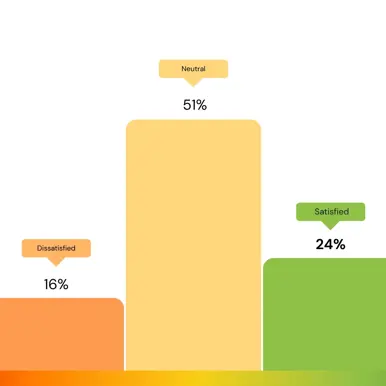When a customer orders a new product and it’s not set up in the order system, who’s going to complete that product set up? More to the point, who’s going to make sure this doesn’t happen again? IT? The business? The best answer is a person or a team who see themselves as both business and IT. These people are the “bridge”
Why it’s important to own the “bridge”
Gaps in capability and needs versus delivery will always exist between IT systems and the users. They can range from simple tactical issues like a new product not being set up in the sales system or errors in a manager's report, through to strategic opportunities like identifying suitable systems for a completely new business coming on stream two years from now.
It’s important to recognise that this space between IT systems and users represents a significant risk to the efficiency and effectiveness of the IT resource. Leaving problems in this space unresolved can have a negative impact on a business and its customers and suppliers. The benefits of missed opportunities in this area can far outweigh the cost of the resources required to recognise and take those opportunities.
Many businesses struggle to recognise the value of “bridging” (i.e. servicing and managing) this gap effectively. Efforts in these areas are often seen as reducing resources and time available for “more productive” parts of the business like sales processing and customer service. Frequently attempts to manage these gaps fall between the cracks of people and teams whose roles and organisational focus do not encourage effective ongoing ownership and understanding of these gaps.
The key is to identify the people who care about how the system is best used.
In short, managing this space effectively is vital and here’s the rub - it becomes much easier if a business is good at identifying, encouraging and nourishing the right people and teams to own the “bridge”.
Breaking it down
These gaps generally fall into three categories ranging from day-to-day tactical issues through to long term strategic opportunities:
- Support - Maintenance, configuration, security and user support.
In many smaller businesses the support functions will be fulfilled as and when required by personnel with wider responsibilities. Larger business will have dedicated people and teams tasked with delivering these support services. - Change management - IT systems project management, communications, testing, training.
In many smaller businesses the change management function will be fulfilled as and when required by the same people doing support with management backup. Larger business will have dedicated managers, professionals and teams tasked with delivering these services. - Change planning - Recognising future opportunities and priorities, requirements analysis and solution selection.
Many smaller businesses will service the change management function as and when required with the management team and external / temporary consultants and advisors. Larger business will have regular strategic planning exercises and pull together teams supported by analysts for specific projects as required.
Find someone who cares
Frequently the best people to support and own servicing and managing IT business systems come from the business itself. Obviously it can help to have some basic understanding of how IT systems work, but having a detailed knowledge of the business domain can be equally useful (if not more so!).
The key is to identify the people who care about how the system is best used and who show an interest in learning about the system and linking it to what the business needs. These people will naturally gravitate to being part of the communication bridge between IT and the business stakeholders.
Ripple up and grow
If you have identified and developed good people and teams who can understand and manage the support category then these same people can be a great resource to leverage for change management efforts. Some of these people involved in support efforts may be capable of growing into effective managers and fulfil the change management and planning roles in the future.












